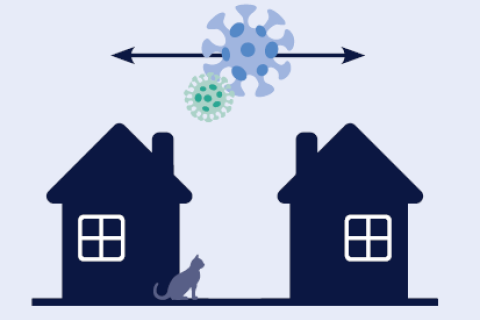Modelling of SARS-CoV-2 transmission between cats and humans

As a result of measures such as 'social distancing', 'washing hands' and 'staying at home with mild clinical signs' we are increasingly controlling the COVID-19 pandemic. However, when cats turn out to play a role in the transmission of SARS-CoV-2 to humans, additional measures might be necessary. Mathematical models are important for risk assessment and assessment of the effectiveness of potential measures.
What does the research involve?
The aim of this study is to investigate how SARS-CoV-2 transmission between households depends on the interventions (within household hygiene and social distancing between households) and the absence or presence of cats. When cats turn out to play a role in SARS-CoV-2 transmission between households, areas with a high density of cat households may encounter a reproduction number that is locally above 1. This means that the virus will not go extinct in those areas. In this study, researchers use mathematical models to gain more insight into this process.
By using mathematical models we study how we should manage the risk of animal to human transmission.
Mart de Jong is leading this part of the project: “The question that needs to be answered is whether infection risk with SARS-CoV-2 for humans can become more dependent on infections in animals under certain circumstances and how we can manage this risk when necessary. We research this by using mathematical modelling.”
Responsible partner
Wageningen University & Research is responsible for this part of the project. Mart de Jong is leading this research.

